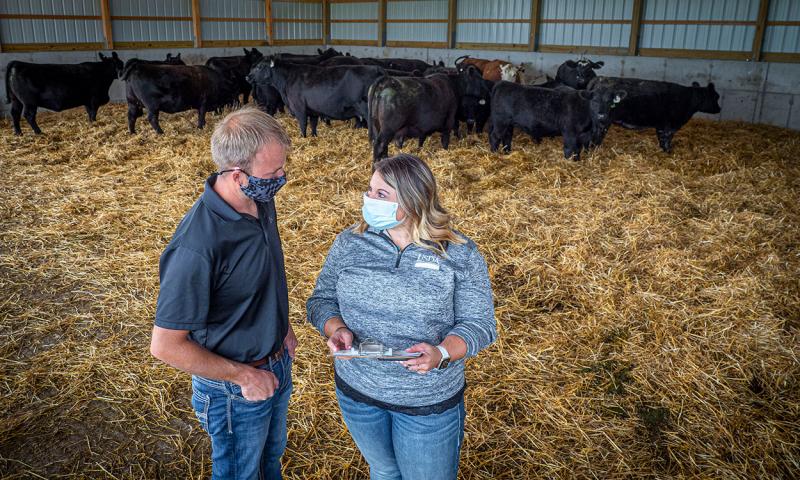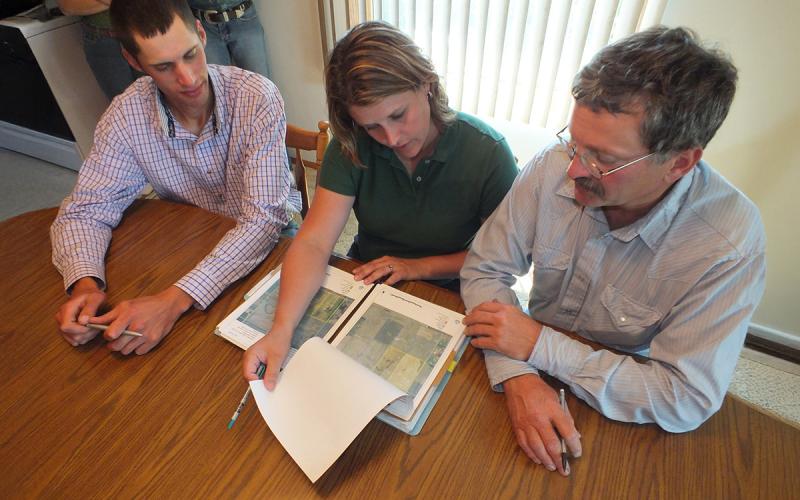
A dry winter, fires and lack of precipitation have made livestock feed a concern for many South Dakota producers.
While heavy snowfalls bring concerns and cause problems during the winter, the moisture from the snowmelt provides starter moisture for pastures. Many producers watched the Drought Monitor for insight into the 2021 growing season.
There has unquestionably been a change in the drought situation from a year ago. This year 93% of South Dakota is listed as D0–D4, compared to a year ago when 89% of the state didn’t have a drought designation. Add in the early-season fires in the northwestern parts of the state, destroyed forage residue left from the prior growing season and the below-normal spring rainfall amounts, and many producers start to face feed shortages.
The delayed green-up and projected reduction in total grass production hurt many aspects of the livestock operation. Feed costs are the single largest budget item for cattlemen and sheep producers. Producers forced to delay turnout end up feeding forage reserves or making forage purchases.
About the Livestock Forage Disaster Program
The U.S. Department of Agriculture-Farm Service Agency (USDA-FSA) administers the Livestock Forage Disaster Program (LFP). The program assists producers who are dealing with drought and other grazing losses.
Producers are eligible for an LFP payment if they are a livestock owner or contract grower that owns or leases grazing land or pasture land physically located in a county that has been designated as D2 or worse by the U.S. Drought monitor.
Unfortunately, many South Dakota producers have had to utilize the LFP program. However, it is nice to have a program available to alleviate some of the extra feed costs associated with drought and fire-related forage losses.
County Eligibility
While much of South Dakota is currently under drought stress, not all counties qualify for an LFP payment at this time. The LFP program is limited to the grazing season, defined as May through October in South Dakota.
As of May 17, 2021, 12 South Dakota counties are eligible for an LFP payment. A portion of these 12 counties have been designated as D3 during this grazing season. Counties with a D2 designation must remain a D2 designation for a minimum of eight consecutive weeks. A map of eligible counties is on the USDA-FSA Livestock Forage Program (LFP) website.
| Designation | Number of consecutive weeks |
monthly payments |
|---|---|---|
| D2 | 8 weeks |
|
| D3 | At any time during grazing season |
|
| D3 | 4 weeks |
|
| D4 | At any time during grazing season |
|
| D4 | 4 weeks |
|
Livestock Eligibility
Eligible livestock must be grazing animals that get most of their nutrition by grazing forage grasses or legumes. Examples include beef cattle, buffalo/bison, dairy cattle, horses, goats and sheep. If your livestock type is not listed, talk to your local USDA-FSA office or view this fact sheet for a complete list. This nutrition requirement excludes animals that, as part of the regular business operation of the owner, were or would have been in a feedlot on the beginning date of the qualifying event.
The livestock must have been owned, leased, purchased or entered into a contract 60 days before the beginning date of a qualifying drought or fire event.
Animals sold due to the qualifying event during the current production year or one or both of the two production years immediately preceding the current production year are eligible for enrollment.
Qualifying animals must be held for commercial use as part of the operation on the beginning date of the eligible event. This requirement excludes, but is not limited to, wild-or-free roaming animals used for recreational purposes, such as pleasure, hunting, pets, roping or show.
Enrollment and Questions
Producers need to enroll in the program at their local USDA-FSA service center. If an individual is uncertain of their nearest center, the USDA’s website can assist.
The application for payment and all supporting documentation is due to the USDA-FSA center within 30 calendar days after the end of the calendar year in which the grazing loss occurred. Supporting documentation may include proof of loss, proof of ownership, lease agreement, grower contract, number and kind of livestock owned and proof of grazing restrictions. Producers are encouraged to contact USDA-FSA staff to determine required documentation for their specific situation.
Producers may qualify for additional payments if the drought continues. Worsening drought designation for all or part of the county or the number of consecutive weeks at the current designation may trigger these additional payments.

